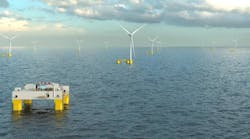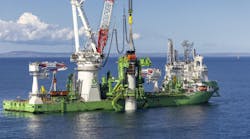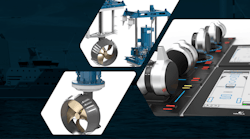GE’s Pipeline Solutions developed SmartScan Deep Sea, a new multi-diameter in-line inspection (ILI) tool for deep-sea pipelines, to help overcome obstacles to expanding into previously inaccessible offshore fields.
At depths of 1,500-3,000 m, deep-sea pipelines withstand extremely high pressures. As a result, they typically feature thicker walls than regular pipelines and include multi-diameter segments that are “unpiggable” - meaning they cannot be inspected with traditional ILI tools.
ILI inspections are a primary method of identifying corrosion defects that could lead to costly and environmentally harmful releases.
To provide operators with an ILI solution to this problem in commissioning and inspecting of deep-sea pipelines, GE developed SmartScan DS as part of its high-resolution Magnetic Flux Leakage (MFL) product portfolio. The tool’s collapsible structure enables it to navigate multi-diameter lines. It also uses components and subsystems such as highly sensitive sensors, pressure-proof electronics, and magnetic circuitry.
“SmartScan DS is ideal for those areas in which deep-sea exploration and development will be concentrated over the next 5 to 10 years,” says Claudi Santiago, president of GE’s Oil & Gas business.
GE tested the SmartScan DS in Houston and in Cramlington, England, where GE has its MFL technology center.
GE’s PII Pipeline Solutions group provides pipeline inspection technology and integrity management services for oil and gas operators.






